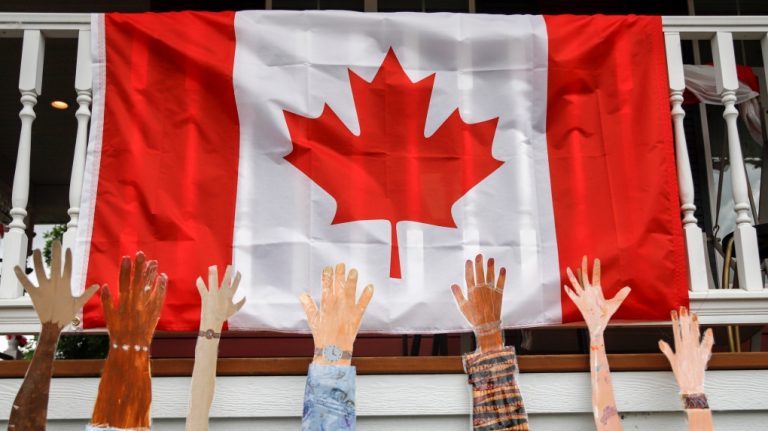Financial hardships and mental health issues have become more prevalent amongst the rise of the COVID-19 virus. The pandemic has added another hardship onto the backs of the most vulnerable communities in Canada, this being the northern communities of Canada, specifically communities who live on Indigenous reserves further isolated at an extremely isolating time.
Food insecurity has been a longstanding issue in northern Indigenous communities, as even prior to the pandemic the cost of food has always been disproportionately higher in the north. Reasons being the remoteness of the northern regions and historical events trickling down into modern-day socioeconomic issues. A chart produced by The Nunavut Bureau of Statistics displays the comparison of Canada-Nunavut food price averages. On this chart, various food items such as flour, milk, butter, and other essentials are listed. Food items in Nunavut can be seen being priced at more than double the overall Canadian price point. Tomato juice for example has an average of $8.82 in Nunavut in 2016, whereas Canada’s was $2.25. Inuit in the north are the group of people who face the highest levels of food insecurity in Canada. In Nunavut, fifty-seven percent of all households are food insecure and over half are severely food insecure.
The cost of food isn’t merely a financial stress but also a source of mental stress to families and individuals. When an individual has to worry about how they will afford their next meal, everything can render hopeless. In an interview with Nathan Sing from Maclean’s Canadian, an Inuk woman living in Inuit named Kyla Flaherty showcased the staggering price of food in northern Canada. “Our soup kitchen is often full, so where do those who are turned away go for their next meal? Their mental health would not be okay.” This statement shows that soup kitchens are not a strong enough solution, as the dire need for adequate food passes the soup kitchen limits.
Food insecurity does not arise from bad spending habits, and lack of knowledge regarding food preparation. Statistics Canada has proved this to be incorrect. In fact, adults in food-insecure households have reported to be 4x more likely to engage in planning behaviours and budgeting while shopping, and less than 2% of Canadians are not knowledgeable on food prep.
Despite the disparities these communities are faced with, there have been several initiatives taking place within northern reserves in attempts to alleviate the problem of food insecurity. The fact that there are some initiatives gives me a sense of relief. Seeing the resilience so many Indigenous people have makes me upset and encouraged at the same time. It is upsetting because the geographical and generation issues have led to such disparities.
A few First Nations communities created their own food delivery service to assist fellow community members, some shared traditional and market based foods with others, while others resorted to growing their own produce.
Such resilience is commendable during a worldwide pandemic, but no group should have to resort to creating initiatives within themselves when other parts of Canada have access to food within a maximum of a few kilometers. It is also difficult to adhere to COVID-19 social distancing rules, and isolation, whilst ensuring food insecurity is not an issue among community members.
Indigenous people need to be given better food, education, and benefits. Land-based education is a must, to strengthen Indigenous peoples’ relationship to the land. Centuries of generational trauma, and colonization have led to food insecurity that is prevalent in society today. As a South Asian person of colour, coming from a family of immigrants, this issue really grapples at my heart. Being newcomers to Canada in 2010 and being welcomed to Canada with open arms while Indigenous peoples who have undergone hundreds of years of generational trauma are being treated inadequately makes me furious. If Canada has the world renowned ability to welcome newcomers, why can the government not do the same for Indigenous peoples? I want you to ask yourself what being a Canadian means. Does it mean leading on a false narrative of equity or actively listening to those in need?
In order to grapple with the issue of food insecurity in northern Indigenous communities, the federal government of Canada needs to start with the reciprocity of support, and actively work on listening to all communities rather than a select few. Community level government initiatives should be prioritized to support Indigenous peoples quickly and effectively. Empty promises need to stop being made, and true commitments need to take place.
Works Cited
Narine, Shari. “COVID forces increase in food prices, decrease in food options in northern remote Ontario”. 2021. Toronto Star. https://www.thestar.com/news/canada/2021/07/22/covid-forces-increase-in-food-prices-decrease-in-food-options-in-northern-remote-ontario.html
Flanagan, Ryan. “$20 Hamburgers and $2 Bananas: The Cost of food Insecurity in Canada’s North”. 2020. CTV News. https://www.ctvnews.ca/canada/20-hamburgers-and-2-bananas-the-cost-of-food-insecurity-in-canada-s-north-1.5154743
“5 Things Canadians Need to Know About Food Insecurity”. 2016. Proof UToronto. https://proof.utoronto.ca/5-things-canadians-need-to-know-about-food-insecurity/
“What we heard: Indigenous Peoples and Covid-19”. 2021. Canada/https://www.canada.ca/content/dam/phac-aspc/documents/corporate/publications/chief-public-health-officer-reports-state-public-health-canada/from-risk-resilience-equity-approach-covid-19/indigenous-peoples-covid-19-report/cpho-wwh-report-en.pdf
“Food security in the North”. 2020. Government of Canada. https://www.rcaanc-cirnac.gc.ca/eng/1604754763667/1604754785694
Sing, Nathan. “The Inuk woman using TikTok to expose high food prices in the North”. 2021. Maclean’s. https://www.macleans.ca/society/health/the-inuk-woman-using-tiktok-to-expose-high-food-prices-in-the-north/
“2016 Nunavut Food Price Survey, Comparison of Nunavut & Canada CPI Food Price Basket Items”. 2016. The Nunavut Bureau of Statistics. https://s3.documentcloud.org/documents/2900528/2016-Nunavut-Food-Price-Survey-Comparison.pdf
“Household Food Insecurity in Canada”. 2020. Proof UToronto. https://proof.utoronto.ca/food-insecurity/#vulnerability



